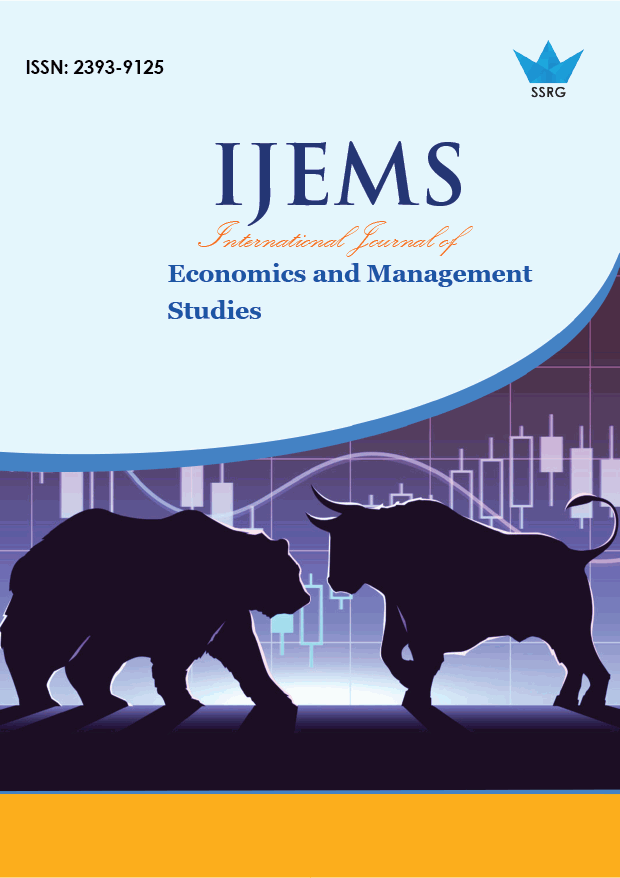A Study on Supply Chain Analysis of Coffee in Ethiopia

| International Journal of Economics and Management Studies |
| © 2019 by SSRG - IJEMS Journal |
| Volume 6 Issue 10 |
| Year of Publication : 2019 |
| Authors : DR. M. Krishna Naidu |
How to Cite?
DR. M. Krishna Naidu, "A Study on Supply Chain Analysis of Coffee in Ethiopia," SSRG International Journal of Economics and Management Studies, vol. 6, no. 10, pp. 170-175, 2019. Crossref, https://doi.org/10.14445/23939125/IJEMS-V6I10P122
Abstract:
This study is initiated to analyze coffee Supply chainin Yubdo District, Western Wollega ZoneOromia Regional state of Ethiopia. It focused on identifying determinants of volume coffee supply of Households; and factors affecting market outlet choice decisions of coffee producers. Data for the study are collected from both primary and secondary sources. The primary data are collected from randomly selectedcoffee producer household’s survey by using a pre-tested structured questionnaire. The data are collected from 132 farmers and 20 traders, and analyzed using STATA software. Coffee supply Chain actors identified in the study include input suppliers, producers, rural collectors, Primary cooperatives, wholesalers, processors and Exporters. Eight market channels were identified for coffee marketing in the study districts. Policy implications drawn from the study findings include: improving farmers’ knowledge and experience on coffee production, encouraging adult education through extension service, improving cooperative of coffee farmers and strengthening the linkage/interaction among Coffee Supply chain actors, expanding accessibility of market infrastructure. Further study needed on coffee supply chain analysis starting from producers to the Exporters would be a considerable issue to improve the whole coffee supply chain in the study area.
Keywords:
Supply chain analysis; Coffee, multiple linear regression regressions; Multivariate probit;
References:
[1] Abay A, Zewdu B. (1999);Export earnings instability and export structure: The case of Ethiopia proceedings of the Ethiopian economic association annual conference on the Ethiopian Economy. 243-265.
[2] Dawit, G. (2010). Market chain analysis of poultry: The case of Alamata and Atsbi-WonbertaWoredasof Tigray region. MSc Thesis, Haramaya University, Haramaya, Ethiopia. pp22.
[3] Degye G., (2015) Value Chain Development for Food Security in the Context of Climate Change (ValueSeC): A contribution through strengthening capacity in higher education in Eastern Africa.
[4] Gong, Wen, Kevin Parton, Rodney J Cox, and Zhangyue Zhou.(2006). "Transaction Costs and Cattle Farmers‟ Choice of Marketing Channels in China: A Tobit Analysis." Management Research News 30 (1): 47-56.
[5] Islam, M., H. Miah, and M. Haque.(2001). Marketing system of marine fish in Bangladish. Bangladish Journal of Agricultural Economics. 24(2): 127-142.
[6] Jari, B. and G. Fraser.(2009). An analysis of institutional and technical factors influencing agricultural marketing amongst smallholder farmers in the Kat River Valley, Eastern Cape Province, South Africa. African Journal of Agricultural Research, 4 (11): 1129-1137.
[7] Kotler, P. and G. Armstrong, (2003).Principle of marketing 10th Edition.Hall of India
[8] Lees, Nic, and Peter Nuthall.(2015). "Collaboration, Cooperation and Power in Food Supply Chains" Conference (59th), February 10-13, Rotorua, New Zealand: Australian Agricultural and Resource Economics Society.
[9] Nurmalina, et al. (2015). Pemasaran (Konsep dan Aplikasi). IPB Press.Bogor. Indonesia.
[10] USAID (2010). Ethiopian Coffee Industry Value Chain Analysis Profiling the Actors, Their Interactions Costs Constraints and Opportunities Chemonics International

 10.14445/23939125/IJEMS-V6I10P122
10.14445/23939125/IJEMS-V6I10P122